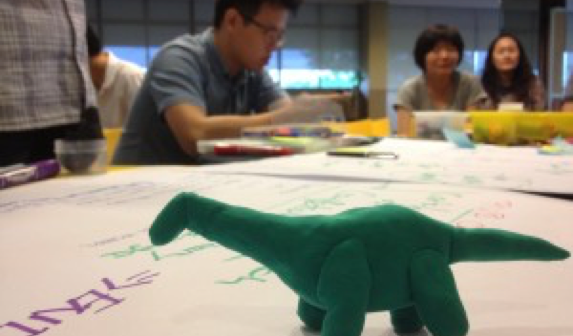
Public service regulates externalities in the market and provides services for citizens. Yet, as governments develop policies to meet the needs of the public, boundaries between the roles of customers, taxpayers and citizens are increasingly blurred. The growing demands from the public challenge the efficacy of policy solutions. Therefore, policy practitioners need to better understand the true needs of their stakeholders to ensure that governments stay relevant. They need to identify their problems, generate ideas for policy solutions, and evaluate their programmes for continual improvement. Design Thinking offers civil servants an alternative set of tools to address these needs and challenges.
We have helped government agencies, multinational corporations, social enterprises, non-profit organizations, as well as small and medium-businesses apply Design Thinking, to come up with more humanistic solutions. The classical pillars of Design Thinking may be adapted for the public service in the following ways:
1. Empathize. The Design Thinking process commences by using ethnographic lens to discover users’ needs, as seen in the Singapore government’s The Human Experience Lab.
2. Define. The next Design Thinking phase is to define the problem based on users’ needs. For example, The Government of Bihar in India and The Centre for Knowledge Societies developed a statement of need that vaccine service delivery must the appropriate temperature for vaccines.
3. Ideate. The next phase is to ideate a wide range of solutions. The Thailand Creative & Design Centre of the Thai Government featured ten sustainable and innovative flood relief prototypes in a publication called “Design for Flood”.
4. Prototype. Design Thinking uses rapid prototyping to evaluate ideas visually. The Design Council from the United Kingdom created working prototypes to improve the delivery experience for diabetes sufferers.
5. Test and Iterate. Prototypes are refined with user feedback. MindLab from Denmark tested the feasibility of “Self-key”, a digital service for filing tax returns, by gathering reactions from users to re-design their strategy.
Design Thinking has the potential to be an innovative tool to solve substantial policy issues, beyond its traditional focus of making the physical interactions with users more human-centric. Public servants should however feel comfortable applying Design Thinking with every other toolkit at their disposal, which can range from technical or statistical analysis to policy or regulatory measures. Design Thinking may not always need to be applied wholesale, and practitioners similarly need to recognize the situations where Design Thinking may not even be applicable at all.
The Design Thinking toolkit is most effective when applied holistically with a data-driven appreciation of the organizational and external dynamics, aligned with the existing power structures, processes, intellectual, cultural, technological, and financial capabilities, reactionary forces, and business logic for ideas to be properly implemented.
When used appropriately, Design Thinking can tie policies closer to the needs of the public, draw greater collaborations between the government, the public, businesses, and civil society, and pave the way for humanistic solutions to large-scale “wicked problems” facing the world today.
See Design Thinking in action in our public sector case study.


